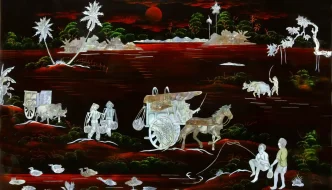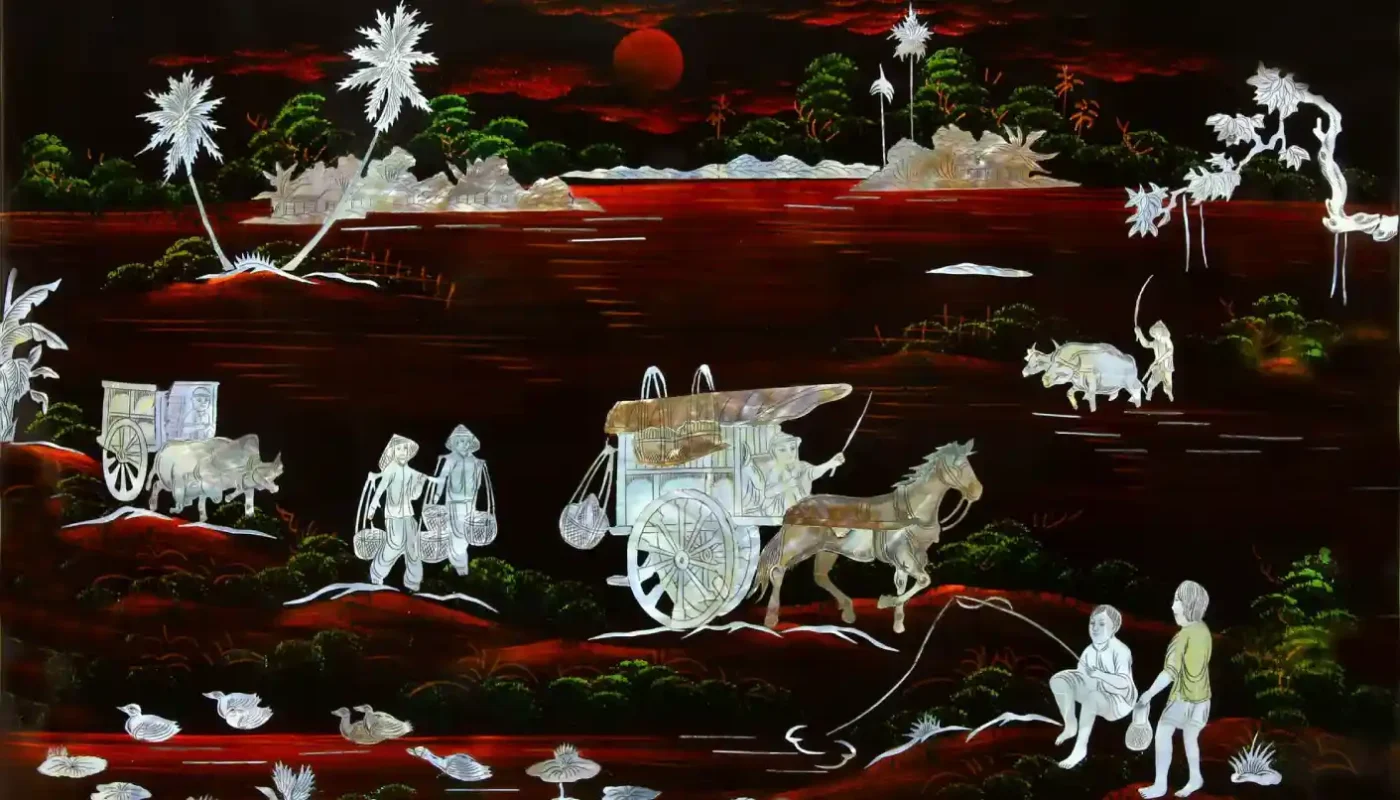Just 40 kilometers south of the bustling heart of Hà Nội, a quiet village hums with the echoes of a thousand-year-old craft. Chuyên Mỹ Commune, nestled in Phú Xuyên District, is a sanctuary of Vietnamese heritage where the ancient art of mother-of-pearl inlay, known as khảm trai, transforms humble shells into shimmering stories. Amid lotus ponds and the faint scent of lacquer, artisans breathe life into wood and shell, preserving a tradition that is as much about identity as it is about beauty.
A Village Steeped in History
In Chuyên Mỹ, craftsmanship is not merely a trade; it is a way of life. The village, surrounded by serene countryside, has been a center of mother-of-pearl inlay for over a millennium. Local lore traces the origins of this art to the 11th century, crediting Trương Công Thành, a general under national hero Lý Thường Kiệt, as its founder. “He retired from battle and found inspiration in the iridescent shells of the river” said village elder Nguyễn Phú Chiến, recounting the tale passed down through generations. From that moment, a craft was born that would adorn altars, furniture, and ceremonial pieces through dynasties and conflicts alike.
Walking through Chuyên Mỹ on a summer morning, the rhythmic tap of chisels punctuates the stillness. Workshops, often tucked behind bamboo-framed windows, are filled with trays of abalone, mussel, and conch shells. Artisan Nguyễn Xuân Dũng, whose family has honed this skill for five generations, works with meticulous focus. “This work takes patience, but the result speaks for itself” he said, carefully placing a fragment of shell into a wooden panel. Each piece, whether a dragon in flight or a scholar under a pine tree, carries layers of cultural symbolism, telling stories of Vietnam’s history and values.
The Art of Alchemy
Creating a mother-of-pearl inlaid piece is a labor of precision and patience, often described by artisans as a form of alchemy. The process unfolds in six intricate steps, as Dũng explained: sketching designs on tracing paper, transferring them to flattened shells, cutting the outlines, carving spaces in wood, sanding and polishing, and finally coating the piece in black lacquer or varnish. Depending on the complexity, a single work can take days or even weeks to complete. “We don’t allow gaps between inlays. The fit must be exact, as if the shell grew there” Dũng said, emphasizing the hallmark precision of Chuyên Mỹ’s technique.
The materials themselves are a testament to the craft’s global connections. While many shells are sourced locally, others, like the luminous yellow-lip pearls from Singapore or rare red snails for royal motifs, are imported. “The most prized shell has the lustre of a rainbow” Dũng noted, likening each fragment to a stroke of nature’s brush. The result is a piece that transcends mere decoration, embodying narratives of heritage and artistry in every shimmer.
Adapting to a Modern World
While the soul of Chuyên Mỹ’s craft remains rooted in tradition, the village is not immune to the demands of modernity. Over the past decade, changing tastes have prompted a quiet evolution. “Young families no longer want the bulky, ornate furniture of their grandparents” said artisan Vũ Đình. “They want something elegant, functional, and global.” In response, artisans have innovated, crafting minimalist jewelry boxes, portrait inlays, and sleek home decor items that appeal to contemporary aesthetics while retaining the essence of khảm trai.
This adaptability has opened new markets, with exports now reaching countries like Japan, the Netherlands, the UK, the US, and Russia. Nguyễn Đình Hân, chief of Chuôn Ngọ Hamlet, sees this as a point of pride. “When foreigners admire our work, it reminds us that this tradition has a place in the world” he said. Yet challenges persist. Competing with mass-produced, often imported alternatives remains a hurdle, pushing artisans to balance beauty with practicality in their designs.
Technology as a Lifeline
In 2023, all seven hamlets of Chuyên Mỹ Commune were officially recognized as traditional craft villages by the Hà Nội People’s Committee, a nod to the area’s cultural significance. Over 80 percent of the commune’s nearly 3,000 households are involved in the craft, with 15 master artisans holding city-level honors. But recognition alone is not enough to sustain the industry. Nguyễn Trung Hội, chairman of Chuyên Mỹ People’s Committee, highlighted the role of digital platforms in ensuring the craft’s future. “We collaborate with trade promotion centers and organize product exhibitions, both offline and online” he said, noting that families are now trained to livestream sales on Saturdays.
The impact of this digital shift is striking. In the first four months of 2025, online sales surpassed VNĐ70 billion (US$2.7 million), a figure that underscores the potential of e-commerce. Families have invested in photography, lighting, and branding to reach customers beyond Vietnam’s borders. This fusion of tradition and technology ensures that Chuyên Mỹ’s craft remains relevant, even as it competes in a global marketplace.
Preserving the Soul of the Craft
Despite the embrace of modernity, many artisans remain committed to the handmade essence of their work. Master artisan Duy Hải Phát, based in Chuôn Ngọ, believes that true beauty lies in the human touch. “Machines can make work faster, but they cannot make it soulful” he said. “A handcrafted piece has breath—you can feel the maker’s intention.” To safeguard this spirit, artisans like Phát collaborate with universities and cultural institutes to document techniques and offer design workshops to younger generations, urging them to innovate while remembering their roots.
In family workshops across the village, this balance between past and future plays out daily. Lâm Văn Tứ, wrapping a jewelry box for a customer in Singapore, works alongside his father, who polishes a tea cabinet inspired by 19th-century designs. “Each shell we use carries a piece of us: our past, our patience, and our pride” Tứ said. Their quiet synchrony reflects a shared dedication to a craft that defines their community.
As the sun dips low over Chuyên Mỹ’s lotus ponds, the village’s lacquered panels catch the fading light, their inlays glowing with stories of resilience and reinvention. Here, tradition does not stand still—it glimmers forward, one carefully placed shell at a time, a testament to the enduring creativity of Vietnam’s countryside.
















